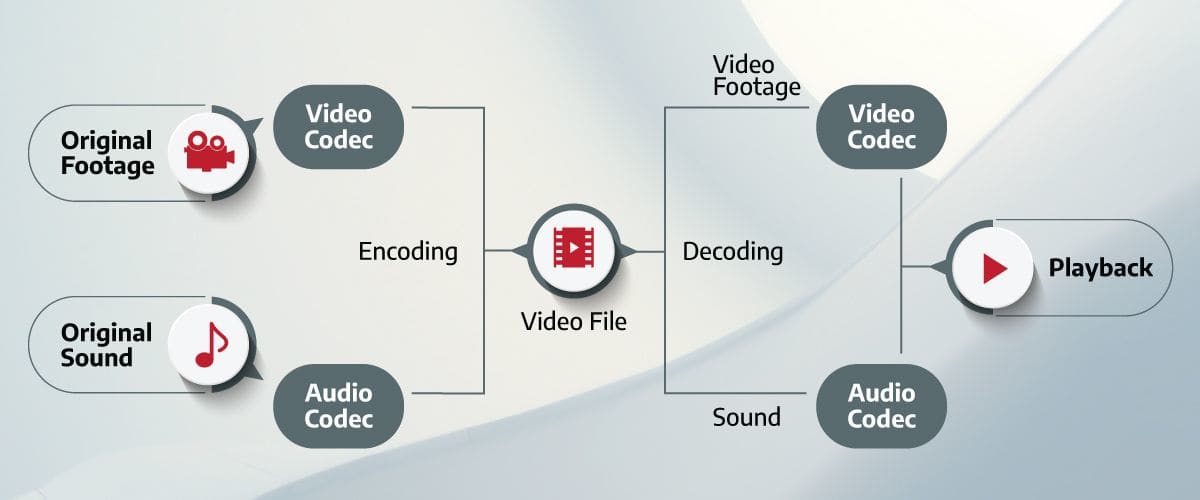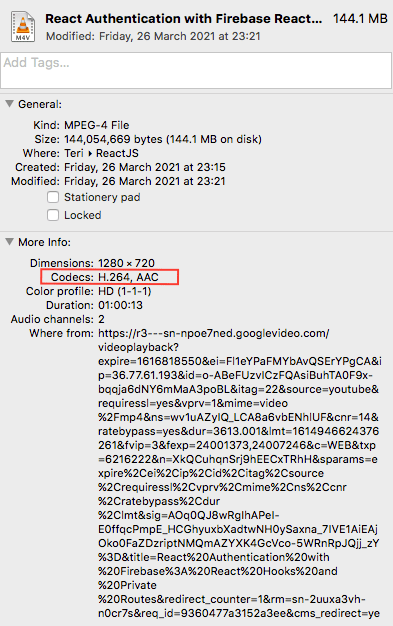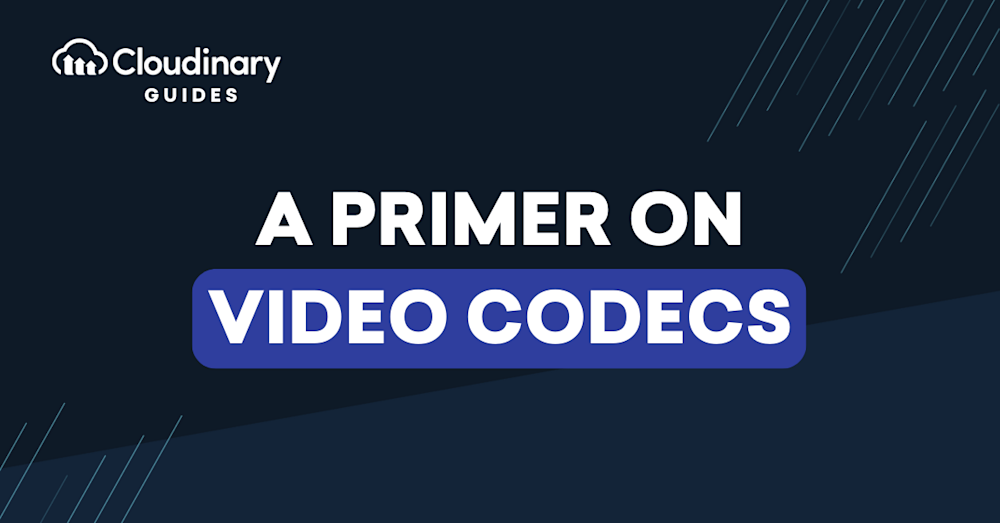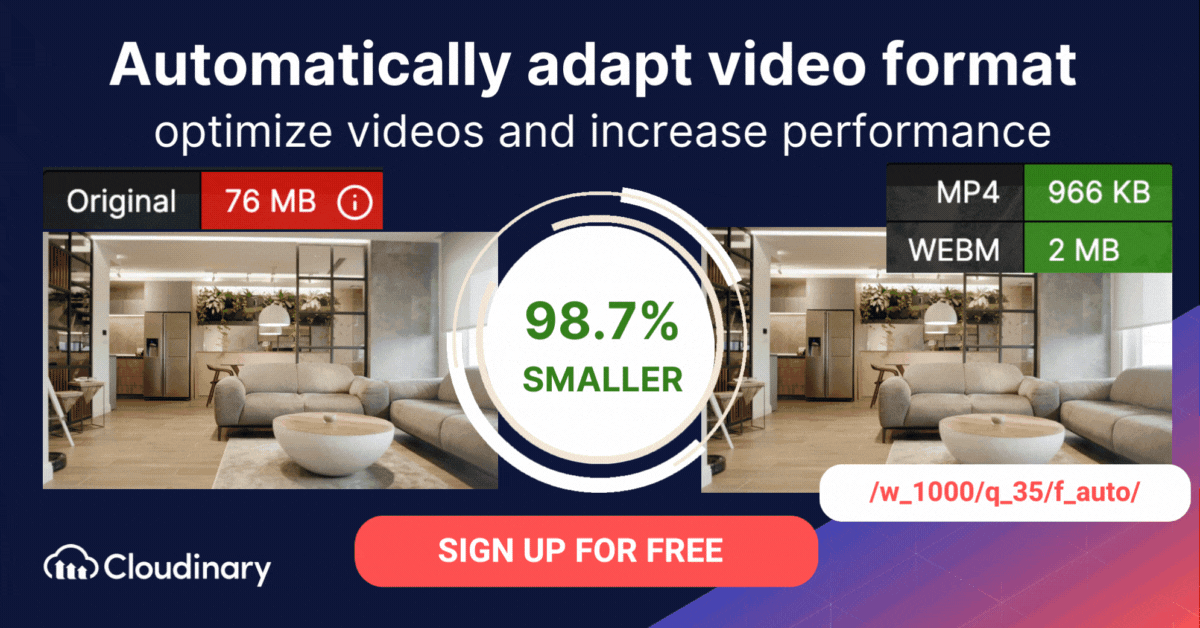Video codecs are the digital “translators” that make modern video possible. By compressing and decompressing video data, codecs enable efficient storage, transmission, and playback of high-quality video across devices and platforms. A codec (short for coder-decoder) uses algorithms to shrink large video files for storage or streaming, then reconstructs them for viewing.
There are many types of codecs, each balancing file size and quality differently, with some popular examples including H.264, H.265, VP9, and AV1. Codecs work hand-in-hand with video containers (like MP4, MOV, and MKV), which package video, audio, subtitles, and metadata together for compatibility and convenience. Understanding how codecs and containers interact is essential for choosing the right format for your video needs, whether you’re streaming online, editing professionally, or optimizing for bandwidth and device compatibility.
In this article:
- What Is A Video Codec?
- The Role of Video Codecs in Digital Media
- Codecs and Container Formats
- Codecs for the Video Industry
What Is A Video Codec?
A video codec is a crucial technology used in the processing of digital video by compressing large video files into manageable sizes and decompressing them for playback. The term “codec” is derived from the combination of “encoder” and “decoder,” highlighting its dual role in both compressing and decompressing digital video streams. Codecs can exist as software or hardware solutions, depending on the specific application, offering flexibility for a wide range of use cases. This technology is vital for the efficient storage, distribution, and streaming of videos, particularly over the internet, where bandwidth and storage limitations are common.
Video codecs utilize algorithms to compress video files into container formats, reducing their size without significantly affecting quality. There are two primary types of video codecs: “lossless,” which preserves the original image data entirely, and “lossy,” which reduces file size by allowing some data to be lost, optimizing the balance between quality and efficiency.

One important thing to note about codecs is that they often work alongside container formats. The MP4 format, for example, combines the versatility of codecs like H.264 or AV1 with the ability to store not just video but also audio, subtitles, and metadata, making it the most practical choice for web uploads, streaming, and device compatibility. Other formats like MOV, AVI, and MKV offer unique use cases but aren’t as universally adopted.
AVCHD is another important format for professionals working with high-definition and cinematic-quality videos. Its use of H.264/MPEG-4 compression ensures high-quality visuals in small file sizes, and its support for 1920×1080 resolution, along with 3D capabilities in AVCHD 2.0, makes it a standout option for specialized workflows. However, AVCHD demands significant processing power during encoding and decoding, which could influence hardware choices for video production.
How Video Codecs Work: Compression and Decompression
Video codecs function as both a coder and decoder. The encoder compresses raw video data, reducing file size by removing redundant or less important information. This process is essential for making high-resolution videos manageable for storage and streaming.
When you play a video, the “decoder” reverses this process, decompressing the data so it can be viewed on your device. This dual action is what allows large video files to be efficiently transmitted and then reconstructed for playback without noticeable loss in quality.
Types of Codecs and Their Strengths
Different codecs are optimized for different goals. Some, like H.264, focus on balancing quality and file size, making them ideal for streaming and general use. Others, such as H.265 (HEVC) and AV1, offer even greater compression efficiency, which is crucial for high-definition and 4K content.
There are also open-source codecs like VP9 and AV1, which are royalty-free and widely supported in modern browsers and platforms. Choosing the right codec depends on your priorities; whether it’s minimizing file size, maximizing quality, or ensuring compatibility.
The Role of Video Codecs in Digital Media
In today’s fast-paced digital sphere, how you deliver videos counts a lot. You need a tool to compress them before transferring them over the internet and making them available to viewing devices. One way to achieve that is by compressing videos with codecs, which also optimize them for playback. Performing those tasks properly would greatly smooth out your videos and accord them a higher frame rate.
Codecs comprise an encoder (co) and a decoder (dec) for compressing and decompressing videos, respectively. Videos can be encoded for storage or streaming and then decoded when ready for viewing on a video player, such as VLC or QuickTime.
As internet speed rises and video files keep ballooning, viewers find it hard to stream uncompressed 4K HD videos with their mobile data. That’s why codecs are essential for broadcasters and online content creators.
For instance, MP4’s lightweight nature makes it particularly advantageous for web uploads, as its small file sizes ensure quick uploads and seamless playback across platforms like YouTube and Instagram. On the other hand, formats like MOV offer high-quality editing options but are better suited for Apple environments.
For professionals focused on high-quality distribution or Blu-ray publishing, formats like AVCHD stand out. AVCHD’s compatibility with Blu-ray discs and its ability to deliver rich, high-definition content with advanced compression make it a go-to choice for cinematic projects. This format is particularly beneficial in environments where resolution and visual fidelity are paramount, such as film production or advanced video editing.
Codecs and Container Formats
By familiarizing yourself with the next-generation video formats, you’ll readily understand the differences between codecs and container formats.
A container format is a package that contains a file’s metadata, including the audio codec, video codec, and closed captions. For instance, properties like file size, file extension, etc. are displayed in a video or audio file, as in this example:

Standard container formats for videos include MOV, FLV, and WMV; audios have their own container formats. In addition, containers differ from codecs in that the former acts as storage units for codecs. Container formats open and allow codecs to access only the target device that supports the stored codec.
For instance, H.264, a widely used codec, is often incorporated with the AAC audio codec and is typically packaged into the .mp4 format, showcasing its versatility in different container formats.
Other container formats like MKV (Matroska) stand out for being free and open source, making them a favorite among users who value flexibility and customization. WMV and AVI, while legacy formats, still find use in high-quality video projects, though their large file sizes make them less practical for streaming. You may also encounter Ogg files, which is fully open source and often paired with the Theora codec for browser-based and open-source media workflows.
Understanding Containers vs. Codecs
It’s important to distinguish between codecs and containers. While a codec is responsible for compressing and decompressing video data, a container is the file format that holds the video (and audio) streams, along with subtitles and metadata.
Common containers include:
- MP4
- MOV
- MKV
- WebM
For example, an MP4 file might contain video encoded with H.264 or AV1, audio encoded with AAC, and subtitle tracks. The choice of container affects compatibility and feature support, while the codec determines compression efficiency and quality.
Codecs for the Video Industry
This section describes five of the best codecs for video production helping you choose the best video file format based on your specific needs.
H.264, aka AVC
H.264, also known as Advanced Video Coding (AVC), is likely the most versatile and prevalent codec, particularly for streaming. Because of this codec’s wide market penetration, Cable TV broadcasting and Blu-ray discs have adopted it as a standard.
It remains the best video codec, primarily due to its extensive support across various browsers and devices.
Pros
- H.264’s principal development goal was to build a standard capable of delivering high video quality at a lower bitrate than that employed by the previous standards.
- Almost any device can play H.264.
- H.264 serves the streaming platform YouTube and numerous devices perfectly well.
- H.264 supports container formats like MP4, MOV, F4V, 3GP, and TS.
Cons
You must pay a license fee to use H.264.
H.265, aka HEVC
H.265, also known as High-Efficiency Video Coding (HEVC), is faster than its predecessor, H.264.
H.265 is particularly effective for compressing high-detail, “cinematic” videos, offering advanced compression algorithms that can provide better video quality than H.264 at the same bitrate. However, HEVC may not be supported by some devices and browsers, making it less compatible.
Pros
- H.265 compresses video with many techniques, retaining myriad details and delivering the best quality in the smallest possible format.
- With a 50% higher compression efficiency than H.264, H.265 is less common but produces significantly smaller files.
- H.265 works well for high-definition (HD) video.
Cons
A license fee applies.
AV1
AV1, which stands for AOMedia Video 1, was created by the Alliance for Open Media (AOM). Chrome and Android browsers have always supported AV1.
As of 2023, AV1 is recognized as the best video codec in terms of video quality, offering comparable visual quality to H.265 while consuming 12% less data. This efficiency makes it highly suitable for modern video streaming demands.
Pros
- Open source and royalty free, AV1 is an alternative to fee-based H.265.
- AV1 delivers a bitrate saving of up to 50%, which translates to exceptional quality and much higher compression than legacy codecs like H.265 and H.264.
- AV1 is free, saving you bandwidth costs.
- AV1 supports the container formats MP4, 3GP, and MKV.
VP9
As an alternative to H.265, VP9 offers superior quality at an identical bitrate. Though slated primarily for users on Android and other Google platforms (YouTube and Chrome), VP9’s playback limitation might be a deal breaker for broad markets.
For high-resolution content, especially 4K or above, VP9, along with AV1, is preferred for YouTube due to their superior compression and quality.
Pros
- Like AV1, VP9 is another license-free and open-source codec developed by Google.
- VP9 supports all Google products: Chrome, YouTube, Android.
- VP9 supports the container formats WebM and MKV.
Cons
VP9 does not work on Apple devices—a significant shortcoming.
H.266, aka VVC
H.266, also known as Versatile Video Coding (VVC), was created as HEVC’s successor by the German firm Fraunhofer, whose proposal states that H.266 reduces data requirements by 50% of the bitrate relative to HEVC, leading to video files being transmitted twice as fast. HD video then becomes more ideal for mobile streaming.
At this point, even though still too new for a definitive evaluation of its performance, H.266 promises to significantly boost video’s transmission speed and lower the storage cost.
Other Notable and Legacy Codecs
Beyond the modern standards, the video ecosystem includes a number of legacy, open-source, and specialized codecs that serve niche purposes:
- MPEG-2: the broadcast and DVD standard, known for reliable performance in physical media and television.
- VP8: Google’s open-source precursor to VP9, widely used in WebRTC and browser-based real-time communication.
- Theora: part of the Ogg project, an early open-source streaming codec often paired with the Ogg container.
- Cinepak: a pioneering codec for CD-ROM and early web video in the 1990s.
- Dirac: BBC’s wavelet-based open-source codec used in archival and broadcast contexts.
- x264 / x265: popular open-source software implementations for H.264 and HEVC encoding and decoding.
- SVT-AV1: an Intel-developed AV1 encoder optimized for performance and quality.
- Apple Intermediate Codec: designed for high-speed editing in QuickTime workflows.
- DNxHD: Avid’s production codec for professional editing with high performance.
- Lossless Codecs: Lagarith and Huffyuv, commonly used for archival capture and post-production where preserving every bit is critical.
Pro Tip
Consider Cloudinary’s Video API for Dynamic Video Transcoding
A complete solution to manage, encode, and optimize for any device, channel or network condition. Support for latest codecs (HEVC, VP9, AV1).
Frequently Asked Questions
Which codecs are key for browser-based and real-time video?
VP8 and VP9 power many WebRTC and streaming applications, and Theora still appears in open-source Ogg streams.
Are there codecs optimized for editing and post-production?
ProRes, Apple Intermediate Codec and DNxHD are designed for high-speed professional workflows, while Lagarith and Huffyuv provide lossless quality for archival purposes.
Beyond MP4, WebM, and MOV, what containers should I consider?
The Ogg container pairs naturally with Theora and Vorbis, offering a fully open-source stack for audio and video.


